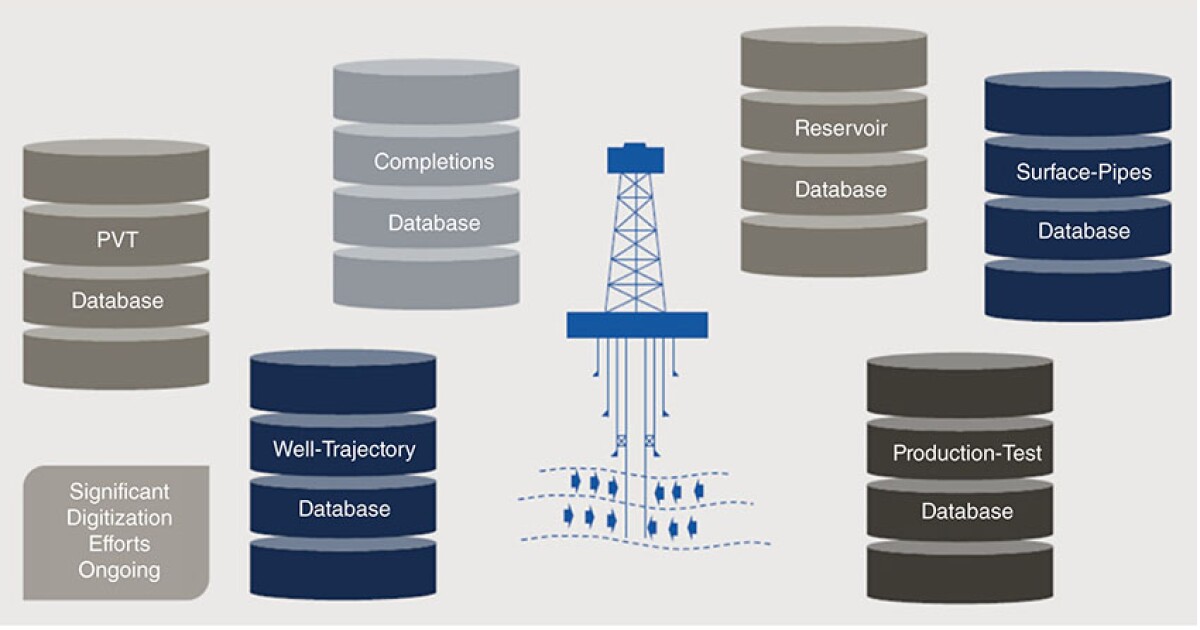Innovative Approach Facilitates Well Monitoring in Stacked Reservoirs Using Near-Critical Fluids

The Future of Oil Production: Fully Compositional Integrated Asset Models
In the constantly evolving world of oil and gas exploration, technology plays a pivotal role in shaping the strategies that operators employ to optimize production. One of the latest innovations making waves in the industry is the Fully Compositional Integrated Asset Model (FC-IAM), a comprehensive digital tool designed to enhance monitoring and management across oil fields. This article takes a deeper dive into how FC-IAMs are transforming the oil production landscape, focusing on the recent developments from an offshore field off the coast of Abu Dhabi.
What Are Fully Compositional Integrated Asset Models?
FC-IAMs are sophisticated digital models that integrate various geological and engineering data to provide a holistic view of reservoir behavior. This approach allows operators to perform detailed analyses, predict performance, and ultimately optimize production strategies. A key component of FC-IAMs is their ability to incorporate real-time sensor data, enabling a more responsive and proactive management strategy. This integration not only helps in monitoring well performance but also assists in identifying prospective opportunities for enhanced oil recovery.
The Case Study: Offshore Abu Dhabi’s Stacked Reservoirs
Located approximately 120 kilometers off the coast of Abu Dhabi, the oil field in question features a complex geological makeup, including four stacked reservoirs. Each reservoir hosts near-critical fluids, making it a challenging environment for conventional production techniques.
During the appraisal phase, which involved drilling eight exploratory wells, multiple lithologies were identified, primarily consisting of dolomite and anhydrite, alongside subordinate limestone deposits. This geological diversity presents unique challenges and opportunities, necessitating an advanced understanding of reservoir dynamics for effective exploitation.
Digital Surveillance: A Game Changer
The incorporation of FC-IAMs allows operators to deploy comprehensive digital well surveillance systems effectively. By augmenting the FC-IAM with high-frequency sensor data, operators can continuously monitor various indicators of well performance. This data-driven approach provides invaluable insights into the status of each well, enabling swift adjustments and interventions when necessary.
The sensors track parameters such as pressure, temperature, and fluid composition in real-time. This information is critical for diagnosing potential issues before they escalate, allowing operators to tackle challenges head-on. In the case of the offshore Abu Dhabi field, specific metrics can help identify the optimal production strategies tailored to the unique characteristics of each reservoir.
Maximizing Oil Production: Techniques and Technologies
The combination of FC-IAMs and advanced monitoring tools means operators can systematically evaluate and implement strategies that maximize oil production across the field. Some of the notable techniques utilized include:
1. Production Forecasting: By analyzing historical and real-time data, operators can forecast future production trends, allowing them to plan effectively and allocate resources efficiently.
2. Enhanced Oil Recovery (EOR): The well-composed nature of the reservoirs allows for advanced EOR techniques. These methods can be closely monitored and adjusted in real-time to ensure maximum recovery with minimal environmental impact.
3. Data Analytics and Machine Learning: The integration of AI and machine learning algorithms with FC-IAMs empowers operators to analyze vast datasets quickly and identify patterns that may not be apparent through traditional analytical methods.
4. Scenario Analysis: The predictive capabilities of FC-IAMs enable operators to simulate various “what-if” scenarios, helping them to make informed decisions based on potential outcomes.
Addressing System Constraints
While the potential for increased production is significant, operators must approach the use of FC-IAMs with an understanding of existing system constraints. These may include physical limitations, regulatory requirements, and market conditions that can affect production rates. The challenge lies in striking a balance between maximizing output and adhering to these constraints.
FC-IAMs facilitate this by modeling different scenarios in a controlled digital environment, allowing operators to explore how changes in strategy might impact overall production while remaining compliant with regulations and system capabilities.
The Road Ahead: Industry Implications
The advancement of FC-IAM technology represents a promising future for the oil and gas industry, particularly in regions with complex reservoir architecture like Abu Dhabi. As global energy demands continue to rise and environmental concerns become increasingly paramount, the ability to monitor and optimize production in real-time is more crucial than ever.
Furthermore, the adoption of FC-IAMs signifies a broader trend toward digitalization in the oil and gas sector. Many companies are now embracing technology as a means to enhance efficiency and sustainability, reducing their ecological footprint while maximizing resource extraction.
Conclusion: A Transformative Tool for Operators
In conclusion, Fully Compositional Integrated Asset Models are set to revolutionize oil production strategies across the globe. With their capacity to provide a comprehensive view of reservoirs and integrate real-time data, FC-IAMs are not just a passing trend; they are a strategic tool that will define the future of the industry. As operators continue to invest in advanced technologies, the potential for increased efficiency, sustainability, and profitability remains high, particularly in challenging environments like the offshore fields of Abu Dhabi.
As the oil and gas industry embraces these innovations, stakeholders will need to remain agile, ready to adapt to new insights gleaned from data, and committed to responsible exploration as they navigate the complexities of modern resource management. The road ahead may be challenging, but with tools like FC-IAMs, the pathway to optimized production is clearer than ever.







